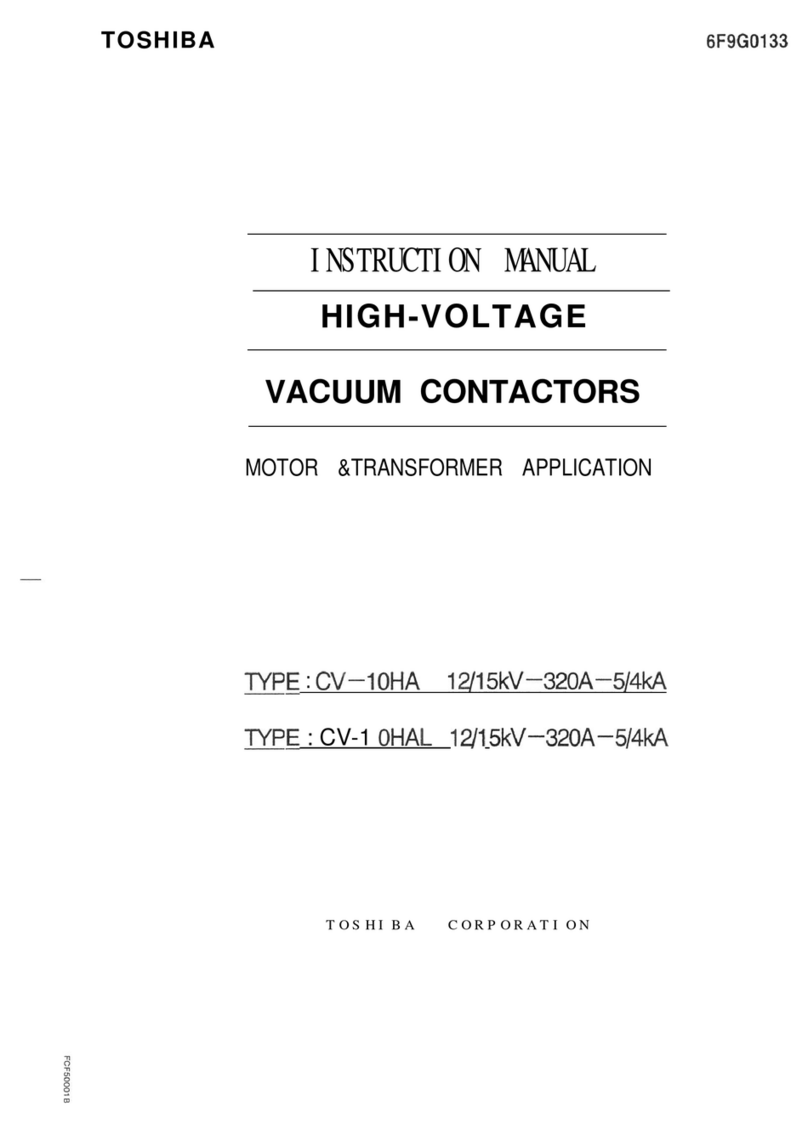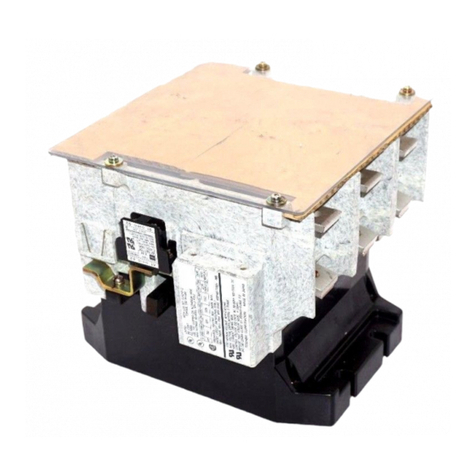
Page 4 TABLE OF CONTENTS
SAFETY .................................................................................................................................................. 1
INTRODUCTION ..................................................................................................................................... 6
GENERAL DESCRIPTION...................................................................................................................... 7
Components ....................................................................................................................................................7
Indicators Provided ..........................................................................................................................................7
Figure 1 – Contactor Structure ........................................................................................................................7
RECEIVING, INSPECTION AND HANDLING ......................................................................................... 8
Receiving and Unpacking................................................................................................................................8
Acceptance Inspection ....................................................................................................................................8
Handling and Moving .......................................................................................................................................8
Figure 2 – Wear Gauge ...................................................................................................................................8
INSTALLATION ...................................................................................................................................... 9
Ambient Conditions .........................................................................................................................................9
Mounting the Contactor ...................................................................................................................................9
Main Circuit Cable Connections ......................................................................................................................9
Ground Connections........................................................................................................................................10
Control Circuit Connections.............................................................................................................................10
Figure 3 – Control Voltage Selection for Closing Coils ...................................................................................10
PRE-ENERGIZATION CHECK................................................................................................................ 11
General ............................................................................................................................................................11
Electrical Checks .............................................................................................................................................11
OPERATION ........................................................................................................................................... 12
Figure 4 – Drive Unit Block Diagram ...............................................................................................................12
Figure 5 – Internal Connection of the Magnetically Held Type .......................................................................13
Figure 6 – Internal Connection of the Mechanically Latched Type .................................................................13
Figure 7 – Typical Control Circuit for Magnetically Held Type ........................................................................14
Figure 8 – Typical Control Circuit for Mechanically Latched Type 125VDC-250VDC Trip .............................15
Figure 9 – Typical Control Circuit for Mechanically Latched Type 24VDC-48VDC Trip .................................16
MAINTENANCE ...................................................................................................................................... 17
Maintenance Program .....................................................................................................................................17
Maintenance Record .......................................................................................................................................17
Servicing Equipment........................................................................................................................................17
Recommended Inspection and Maintenance Types .......................................................................................18
Table 1 – Tightening Torque ...........................................................................................................................18
Table 2 – Check Points for Periodic Inspection...............................................................................................19
Table 3 – Gap/Wipe Standard Values (contactor in new condition)................................................................20
Vacuum Check ................................................................................................................................................21
Figure 10 – Toshiba Portable Vacuum Checker .............................................................................................21
Figure 11 – Application of Test Voltage for Vacuum Check............................................................................22
Electrical Service Life ......................................................................................................................................23
Mechanical Service Life...................................................................................................................................23
Figure 12 – Wipe Measurement ......................................................................................................................23
Service Life – Capacitor Switching ..................................................................................................................23































